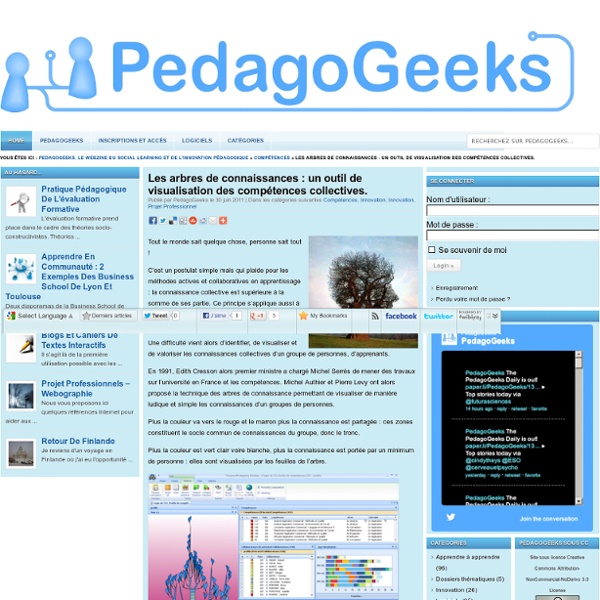



http://www.pedagogeeks.fr/archives/486
Related: Elements de réflexion • `néodoc 0918Pearltrees: 3 years and €8.5 million later, there's finally talk of a business model In Europe, as many of you may already know, people tend to talk about business models much earlier in the game than they do in the US. In fact, it’s a widely-held belief that European investors don’t tend to invest in companies that aren’t generating cash (which many believe explains the French VCs’ love for e-commerce). While US companies like Instagram, Pinterest, Quora and the likes are busy amassing millions upon millions of non-paying users prior to even talking about their business models (oh wait, Pinterest actually does make money?), European companies are more often than not approaching things from the opposite end.
Product Strategy Means Saying No If you’re building a product, you have to be great at saying No. Not ‘maybe’ or ‘later’. The only word is No. Building a great product isn’t about creating tonnes of tactically useful features which are tangentially related. PAD_0 : PT pas content Connected. This pad seems to be opened in more than one browser window on this computer. Reconnect to use this window instead. When is the social curation bubble going to burst? You just can’t move for social curation services right now. The biggest noise might be coming from Pinterest, which is growing like a weed — but whether it’s the new-look Delicious, Switzerland’s Paperli, shopping curation site Svpply, image service Mlkshk or another site, the fact is that almost everybody seems to want to help you save and sort and share the things you find on the web right now. With this swirl of activity, then, it’s no surprise to hear that Parisian service Pearltrees — slogan “collect, organize, discover” — has just raised another $6 million of funding, led by local conglomerate Groupe Accueil. The company, which has been running in public since 2009, welcomed the injection of funds as a way to help expand and scale up its system for bookmarking and organizing, which is based around a clustered visual interface. And it needs that scale. Right now Pearltrees is small and has moderate momentum, building up 350,000 users in the past three years.
PAD_2 suggestions PT2 Connected. This pad seems to be opened in more than one browser window on this computer. Reconnect to use this window instead. Your permissions have changed while viewing this page. Try to reconnect. There are communication problems with the synchronization server.
Pearltrees releases a new version, without any pearls nor trees The Paris-based startup founded in 2009 once declared: “We focus on the visual potential of Pearltrees to let people dive deeply into their interests and nearly feel them”. Their product, offering a digital curation tool, was unique because of the visual interface voluntareely original: links and folders symbolized by rounded pearls attached together like the branches of a tree. Today, pearls and trees have disappeared to make room for a brand new and larger organisation tool.
PAD_1 critiques techniques - PT version 1 et 2 Connected. This pad seems to be opened in more than one browser window on this computer. Reconnect to use this window instead. Your permissions have changed while viewing this page. Try to reconnect. Espace documentaire participatif et gouvernance Abstract : In this article we will show certain characteristics of participative digital documentary spaces which make it possible to contribute to the documentation of the stakes connected to the governance of a territory in both distributed and decentralized way. By presenting their characteristics and their uses, we will suggest that they fulfill several functions concerned with governance, like the taking into account of the stakeholders and the constitution of new knowledge making it possible to inform the decisions to be taken. Without substituting itself, of course, with the methods of face to face meeting, they seem to us likely to contribute to solve certain problems involved in the space-time distribution of the stakeholders and the difficulty in resorting to a centralized management of the procedures.